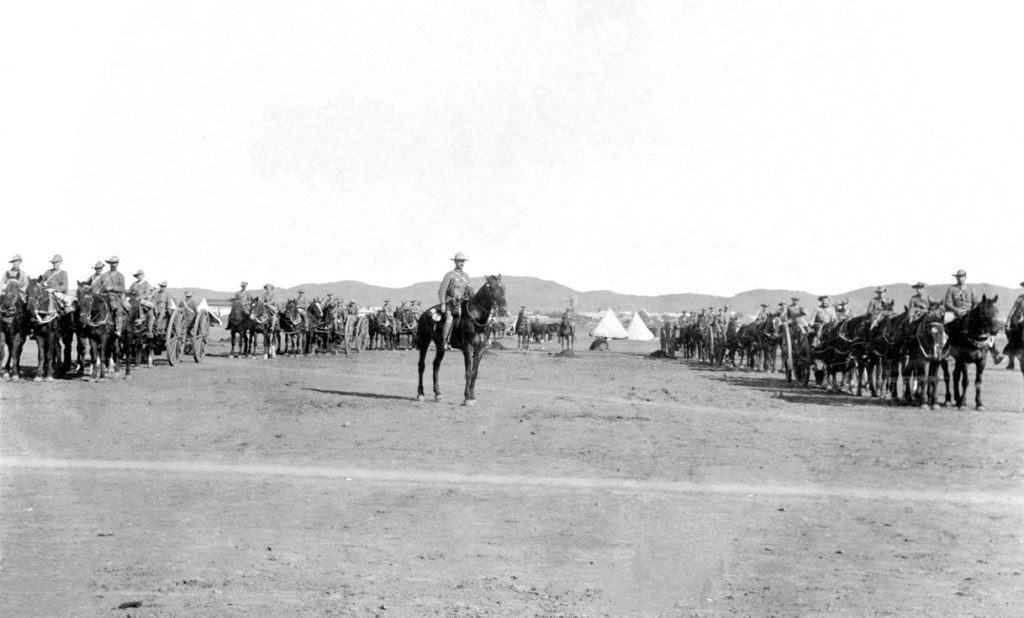Canadian Artillery Boer War Photo
Staff at the RCA Museum found an excellent historical photo showing D Battery, RCA, and their six-gun teams deployed in South Africa during the Boer War (1899-1902). Canada raised and deployed three artillery batteries in the Boer War (C Battery, D Battery, and E Battery), each having six 12-pounders. Staff have looked for years for an image that properly represents the Canadian Gunner experience in South Africa but to no avail. In the collection, we have less than a dozen photos of the Boer War, and all are of poor quality. Thankfully, we stumbled upon this hidden gem, shown below.

The photo shows Lt E. W. B. Morrison (center) leading D Battery, RCA, in the Eastern Transvaal, South Africa, with all six gun-teams of 12 Pounders in late 1900. Each gun team included six horses, limber, 12 Pounder and 10 Gunners. During this period, D Battery took part in “the first all-Canadian overseas show,” engaging the enemy thirty-two times, most notably at Leliefontein on 7 November 1900.
During the Battle of Leliefontein, the Boers launched a surprise attack on British and Canadian forces. Canadian troops included sections of the Royal Canadian Dragoons, the 2nd Canadian Mounted Rifles and D Battery, RCA. With two 12 Pounders, D Battery, under intense pressure and facing a sudden assault, provided cover fire while the infantry acquired high ground, halting the Boer attack. The battle included intense fighting, with three members of the Royal Canadian Dragoons receiving the Victoria Cross.
The D Battery, RCA, Boer War photograph is a reprint likely from the 1920s. Originally, this photo was framed and glued in place. The glue from the back has leaked to the front. There is damage to the bottom of the picture and many tiny scratches throughout. Our conservators will place it in a photo-safe plastic enclosure to protect against long-term degradation. Staff will convert a high-resolution scan of the photo into a 4-foot by 8-foot mural for our Boer War Gallery.
By Andrew Oakden
